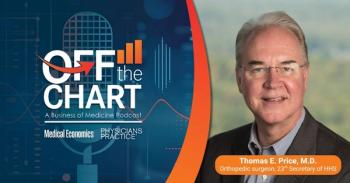
CPOE: How Much Medicine Is in Health IT?
Computerized physician order entry (CPOE) is a two-edged sword: helping to prevent some errors in patient care, but also introducing potential for new errors.
The “witching hour” is upon us at our hospital. In a few short days, computerized physician order entry, or CPOE, will go live at our facility and forever change the way in which medicine is practiced and recorded for hundreds of physicians, physician assistants (PAs), and nurse practitioners (NPs).
This process has seen its share of setbacks in the years leading up to this point. To its credit, the corporate office has deployed significant human and other resources to making sure that this roll out is completed with a minimum of disruption to the lives of the medical staff and the patients who rely on us for care.
It is still a big jump for many on medical staff who have not embraced technology. In anticipation of the transition, scores of technical support people, and hundreds of additional computers have been deployed in the hospital to make the transition as smooth and painless as possible. These types of transitions are just one example as to why we need to emphasize the importance of technical computer skills in this day and age. It has not been an easy road for me as my career has spanned a significant part of the history of the computerization of medicine.
So much of what we need to know in medicine seems to have nothing to do with medicine. Computerization of medicine has been both a boon and a bust.
The promise of the "paperless" office has led to the 24/7 attachment to our data streams, and made it increasingly impossible to separate ourselves from our professional lives. The promise of easier, faster, and more efficient documentation of medicine has as of yet been fully realized.
Yet there is improved accuracy and efficiency, and we are on the cusp of another great transition in medicine as we integrate the digital world into the very real life and death world of our professional lives. We are always forced to learn new skills and process new data in medicine, and this is no different.
CPOE can make us more accurate, safer, and help us prevent a variety of hazards related to errors in patient care, but it is also a two-edged sword in that it interjects a different potential for error.
The sources of medical errors in paper-based systems are well known to us all. CPOE can introduce challenges and errors with unique patients, care settings, and overrides caused by automatic systems. Using default order sets may not take into account every aspect of a unique patient’s weight or comorbidities, resulting in toxic or ineffective doses.
Medicine constantly evolves and adaptability has always been the hallmark of a well-trained and experienced clinician. A clinician is always compelled to evaluate what has happened so that they can apply what they have learned to the benefit of the practice of medicine.
So, early next week, we will take the next step on the never-ending road of change. I, for one, am looking forward to it, and will work to support my fellow clinicians in this difficult transition. Regardless of any hiccups in implementing the new technology, I know that new technology has only benefited myself and my patients.
Find out more about Stephen Hanson and our other
This blog was provided in partnership with the
Newsletter
Optimize your practice with the Physicians Practice newsletter, offering management pearls, leadership tips, and business strategies tailored for practice administrators and physicians of any specialty.




